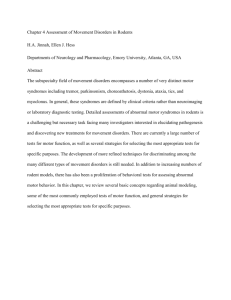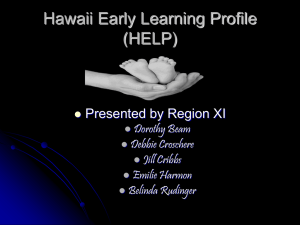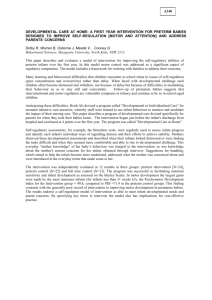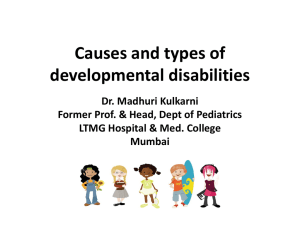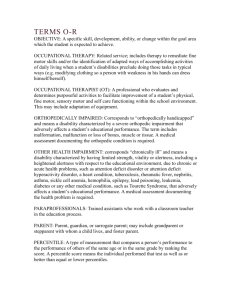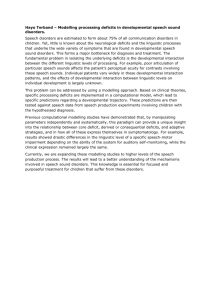New methods in the follow up care of newborn at risk in Centre of
advertisement
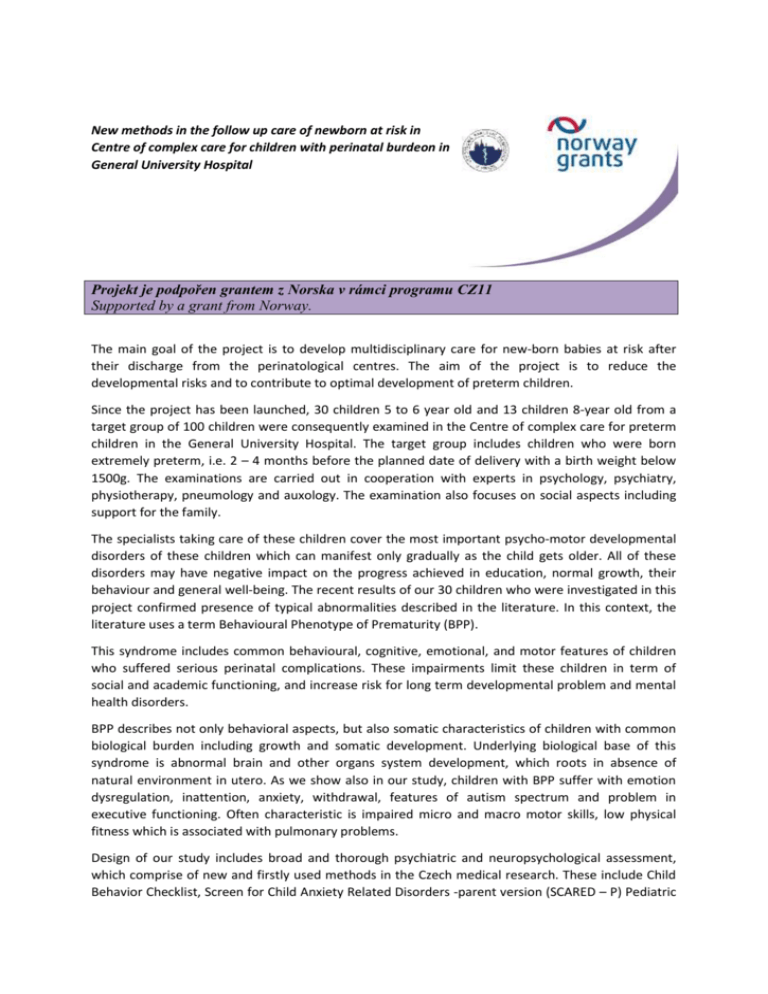
New methods in the follow up care of newborn at risk in Centre of complex care for children with perinatal burdeon in General University Hospital Projekt je podpořen grantem z Norska v rámci programu CZ11 Supported by a grant from Norway. The main goal of the project is to develop multidisciplinary care for new-born babies at risk after their discharge from the perinatological centres. The aim of the project is to reduce the developmental risks and to contribute to optimal development of preterm children. Since the project has been launched, 30 children 5 to 6 year old and 13 children 8-year old from a target group of 100 children were consequently examined in the Centre of complex care for preterm children in the General University Hospital. The target group includes children who were born extremely preterm, i.e. 2 – 4 months before the planned date of delivery with a birth weight below 1500g. The examinations are carried out in cooperation with experts in psychology, psychiatry, physiotherapy, pneumology and auxology. The examination also focuses on social aspects including support for the family. The specialists taking care of these children cover the most important psycho-motor developmental disorders of these children which can manifest only gradually as the child gets older. All of these disorders may have negative impact on the progress achieved in education, normal growth, their behaviour and general well-being. The recent results of our 30 children who were investigated in this project confirmed presence of typical abnormalities described in the literature. In this context, the literature uses a term Behavioural Phenotype of Prematurity (BPP). This syndrome includes common behavioural, cognitive, emotional, and motor features of children who suffered serious perinatal complications. These impairments limit these children in term of social and academic functioning, and increase risk for long term developmental problem and mental health disorders. BPP describes not only behavioral aspects, but also somatic characteristics of children with common biological burden including growth and somatic development. Underlying biological base of this syndrome is abnormal brain and other organs system development, which roots in absence of natural environment in utero. As we show also in our study, children with BPP suffer with emotion dysregulation, inattention, anxiety, withdrawal, features of autism spectrum and problem in executive functioning. Often characteristic is impaired micro and macro motor skills, low physical fitness which is associated with pulmonary problems. Design of our study includes broad and thorough psychiatric and neuropsychological assessment, which comprise of new and firstly used methods in the Czech medical research. These include Child Behavior Checklist, Screen for Child Anxiety Related Disorders -parent version (SCARED – P) Pediatric Sleep Questionaire (PSQ), Childhood Autism Spectrum Test (CAST) and Behavior Rating Inventory of Executive Function (BRIEF). Neuropsychological testing is performed using age appropriate batteries or subtests: including Intelligence and development scales (IDS), Rey-Osterrieth Complex figure (ROCF) Developmental Neuro-Psychological Assessment (NEPSY II (second edition) and Kiddie- Conner's Continuous Performance Test (K-CPT). We tested domains from executive functioning (working memory, shifting of attention, planning, and inhibition), sustained attention, socio-emotional functioning, and language development. The spirometry has been offered to all children requiring lung function examination. Two groups (one for children 5 to 6-years old, second for 8-years old) were enrolled in the study. Since September a new diagnostic method for analysis of expired concentration of nitric-oxide has been implemented; a new complex plethysmography method to assess lung function was systematically applied to the same group of 8-year old children, newly acquired equipment that was installed in our Centre from October. Based on the results of lung function investigations and results of clinical examination, patients` treatment scheme was adjusted to their needs. However, the reliability of these results could be negatively influenced by limited cooperation of these immature children. The physiotherapy investigations indicate, that deviations in the motor activity of premature children are at varying degrees of severity. The motor activity disorder may cause short- or long-term handicap for the child and often distress for the parents. In the reporting period of the project, new examination methods such as Denver Test and MABC Test revealed that certain proportion of patients of targeted group suffered from the Developmental Coordination Disorder (DCD) and Developmental dyspraxia. The motor activity of newly enrolled children in our project was evaluated according to the Alberta Infant Motor Scale. The group of investigated children has been gradually enlarged according to the plan. On the basis of the obtained results adjustment of the treatment strategy will be put in place. Prague, October 2015


